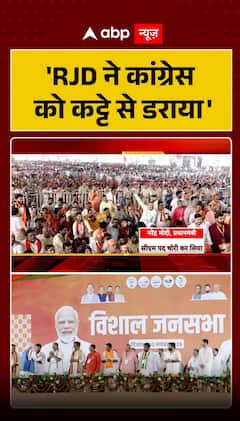Digital Public Infrastructure Can Fast Pace Development Processes, Deliver Huge Benefits: Nirmala Sitharaman
Nirmala Sitharaman said the benefits of DPI will go a long way in strengthening the endeavor to achieve strong, inclusive, resilient, and sustainable economic growth.

Union Finance Minister Nirmala Sitharaman on Friday said that digital public infrastructure (DPI) can help countries fast pace their development processes and deliver huge benefits. She said the benefits of DPI will go a long way in strengthening the endeavor to achieve strong, inclusive, resilient, and sustainable economic growth.
Speaking at the "Digital Public Infrastructure: Stacking Up the Benefits" conference organised by the International Monetary Fund in Washington, Sitharaman said, "Development and leveraging of DPI indeed sets a virtuous cycle in motion, which incessantly deliver huge benefits for countries to fast pace development processes."
The minister also said that DPI or digital public infrastructure has transferred tremendous transformational potential by facilitating innovations continuously by involving the government as well as the private sector.
"In India, during the last couple of years, we have seen how DPI can contribute to targeted, quick and efficient and inclusive service delivery through innovative methods developed by both public and private sector initiatives," she said.
Also Read: Forex Reserves Rise $6.30 Billion To $584.75 Billion, At 9-Month High
Leveraging the potential of identity and payments through DPI, India has opened a record 462.5 million low-cost bank accounts with 56 per cent of account holders being women, the finance minister said.
"This has enabled us to transform the government service delivery by building the world's largest direct benefit transfer system or DPI-based direct benefit transfer system that has aided about 615 million people who received $322 billion directly into their accounts, leading to an overall savings of more than $27 billion just across key central government services and schemes," she said.
Sitharaman said that DPI has some inherent features such as interoperability, openness, low-cost access, and transparency, and these make it inclusive by design.
"This has and is helping India in addressing the various digital divide challenges. The scalability feature of our DPI makes investments economical and is therefore, beneficial to the end user as the cost can be minimised, or the access made all together free. This is pro-inclusion," she added.
Managing Director, International Monetary Fund, Kristalina Georgieva said digital public infrastructure, with its building blocks that are public and private, can tremendously accelerate development as it makes the unaccessible accessible. It also allows the excluded to be included and does it in a very simple and intuitive manner, she said at the conference.
"We learn that we have a role to play on standards and interoperability because we can accelerate access for countries to what others have done. Just over the last two years, we have engaged with countries to learn from India, but also to innovate on their own," she said.
Infosys co-founder Nandan Nilekani said digital public infrastructure is a philosophy and a belief that technology can actually transform society, improve lives, enable financial inclusion, and create economic growth in a more equitable manner.
he said and "I think we all have a collective goal of having 50 countries implement DPI in five years and I'm sure we'll get that".
Top Headlines







































